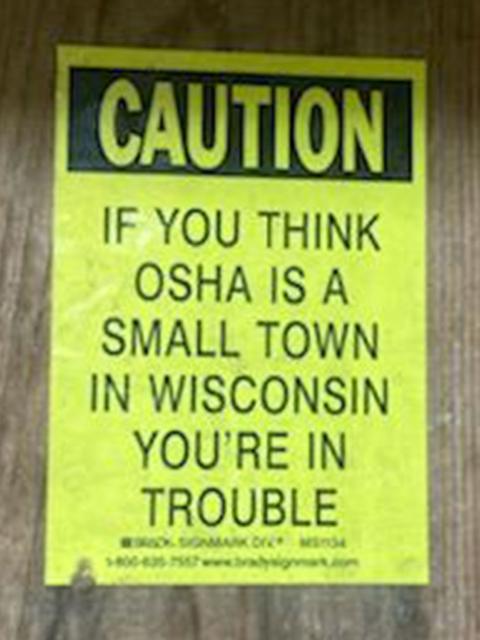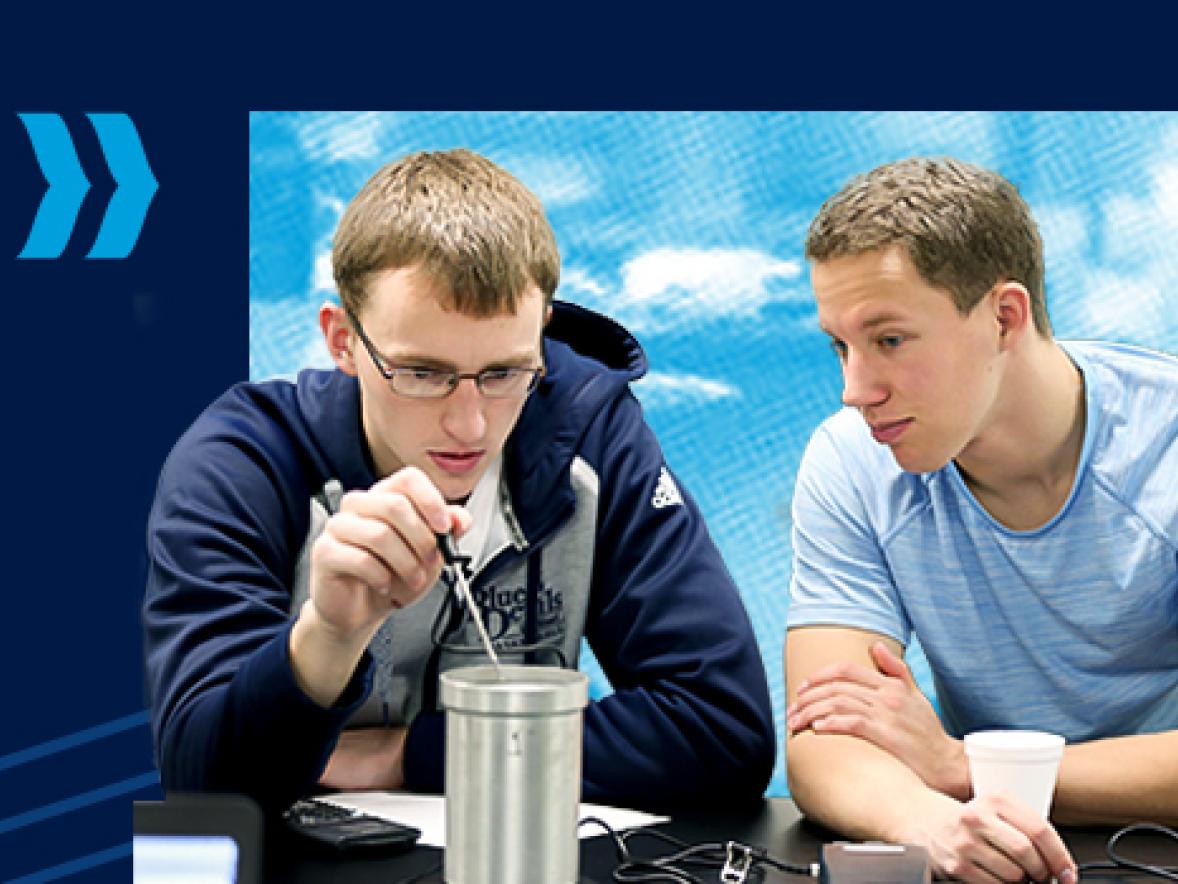Bumper stickers make a car stand out, catching drivers’ eyes, calling for attention. They’re a unique art form and a way of expression for travelers. They’re also a clever marketing tool.
“Eat My Fish” is a bumper sticker recognized by many people in Dunn County, including Brennan Wheeldon, an environmental science senior at University of Wisconsin-Stout. Growing up in Boyceville, Wheeldon remembers first seeing the green and yellow stickers when he was in kindergarten.
“It’s kind of ugly and weird, but it works,” Wheeldon said.

Eat My Fish – it’s memorable. But what does it mean? It’s the slogan for Jeremiah’s Bullfrog Fish Farm, a local fishery and hatchery south of Menomonie, where visitors can fish for rainbow trout and enjoy a fresh-caught lunch.
Wheeldon recently completed a four-month field experience at the fish farm, volunteering 20 hours a week as a fisheries aid.
A sustainable and restorative business model
Wheeldon has a passion for environmental science. It’s a field he believes is pertinent to the care and recovery of the Earth. But he didn’t start his college career in the program. ES is actually the third major he’s enrolled in; he began in manufacturing engineering and then moved to applied biochemistry and molecular biology.
Originally, Wheeldon wanted to be an engineer – his dad works at 3M. “But I can’t work in a cement building. I need to be outdoors. I’m a huge biology nerd,” he said.
Wheeldon is interested in sustainability and has a concentration in aquatic biology. When it came time to search for a field experience, he remembered the green and yellow bumper stickers he saw around town as a kid. He thinks Jeremiah's Bullfrog Fish Farm is the perfect example of a sustainable local business strategy.
The fish farm is owned by Jeremiah Fredrickson, who purchased the business five years ago after teaching agricultural science in Elk Mound for 16 years. “I kind of bought it accidentally on purpose,” Fredrickson said. “I was looking for something new and different. I saw an ad in the Leader Telegram that the farm was for sale and thought it would be an opportunity.”

Wheeldon worked with the fishery manager Dave Sundal, helping with the aquatic health of the fish, feeding, water quality and sanitation of the environments, grounds management of the ponds and processing fish for sales.
The fish farm raises mainly rainbow trout but has also raised brown trout, bluegills and bullhead catfish in past years. It grows, produces and processes fish – from eggs to sale of meat, averaging 15,000-20,000 pounds of fish each year.
“They have a fantastic capacity for raising a large variety of fish,” Wheeldon said. “It’s a small business that requires a bit of everything. The family gets a lot done. They dedicate their lives to the farm and have built a beautiful place.”
Wheeldon took an Ichthyology course in tandem with his field experience. It helped him understand the anatomy of the trout, the type of environment they need and how their growth rate is affected by water quality and temperature.
He believes part of the fish farm’s success in raising quality trout is because it’s in a unique ecological area in the Dunnville Bottoms, near the confluence of the Red Cedar and Chippewa rivers.
“We’re also in the Driftless Region, where the glaciers skipped over,” Wheeldon said. “We have rolling hills and deciduous forests. All sorts of little micro-ecosystems. This is the gold mine of little trout streams, outside of the Rockies.”
Growing up in a farming community, Wheeldon saw the negative impact farms can have on the environment. He appreciates the fish farm’s gravity-fed water system, which constantly cycles water through outdoor tanks. It also has its own wetland.

“The fish farm is so good at implanting what they have,” Wheeldon said. “It’s putting water back cleaner than what it’s pulling out. The water system is purifying the water. It’s great restoration for the area.”
Wheeldon is the second student volunteer who has worked at the fish farm. “It was a good experience for us,” Fredrickson said. “Brennan is an interesting guy. He was excited to learn and share his knowledge.”
Environmental science program director, Mandy Little, agrees. “Brennan is one of those students that is great to have in class. He’s always taking responsibility for his own learning and will go far in life with his great academic and people skills.”
More a way of life
Wheeldon’s field experience was part of UW-Stout’s Cooperative Education and Internship Program, which offers students opportunities to apply curriculum knowledge to enhance learning and career readiness through skill development, said Bethany Henthorn, Career Services co-op director.
“Ninety-seven percent of students who enroll in CEIP believe they gain a competitive advantage over those who do not enroll,” she added.
Coordinating field experiences is new for Career Services – the office began management in fall 2020. It has managed co-ops since 1982, while field experiences were managed at the department level.
“There was a variation among the requirements,” Henthorn said. “With CEIP, we can centralize management and provide consistency for students and employers. The co-ops and field experiences provide variety to our students in terms of types of work experiences.”

Wheeldon also has a full-time job as a carpenter, doing home renovations with Corkscrew Ridge LLC. Although his field experience at the fish farm was a volunteer position, which made it challenging at first not to be paid, he still looked forward to going to work every day.
“Volunteering was a personal decision,” he said. “It was challenging because there’s always about five other things you need to be doing. You’re always playing catch-up at the fishery. But it’s more a way of life than a job. It’s very calming and a great work environment.”
Wheeldon thinks there’s a misconception that environmental science is too niche. “But the nugget of truth is, ES is so broad. You get exposed to so many opportunities and to the world around you. You can discover what you want to do and what you’re passionate about. The program gives you a home.”
Wheeldon will graduate in fall 2022 and plans on earning his master’s, possibly in conservation, environmental landscaping, fisheries management or water quality, which is critical to human survival, he said.
“The field of environmental science is one of the fastest growing fields in America, even though we’re so far behind the rest of the world in terms of what we do,” he added. “It’s very politicized. I want to figure how to better stand out in the business, especially in a capitalized society.”
To enroll in CEIP, the first step students take if they’d like to earn credit for a position they’ve landed, is to start the course enrollment process by reporting the position in the Co-op and Internship Portal.







